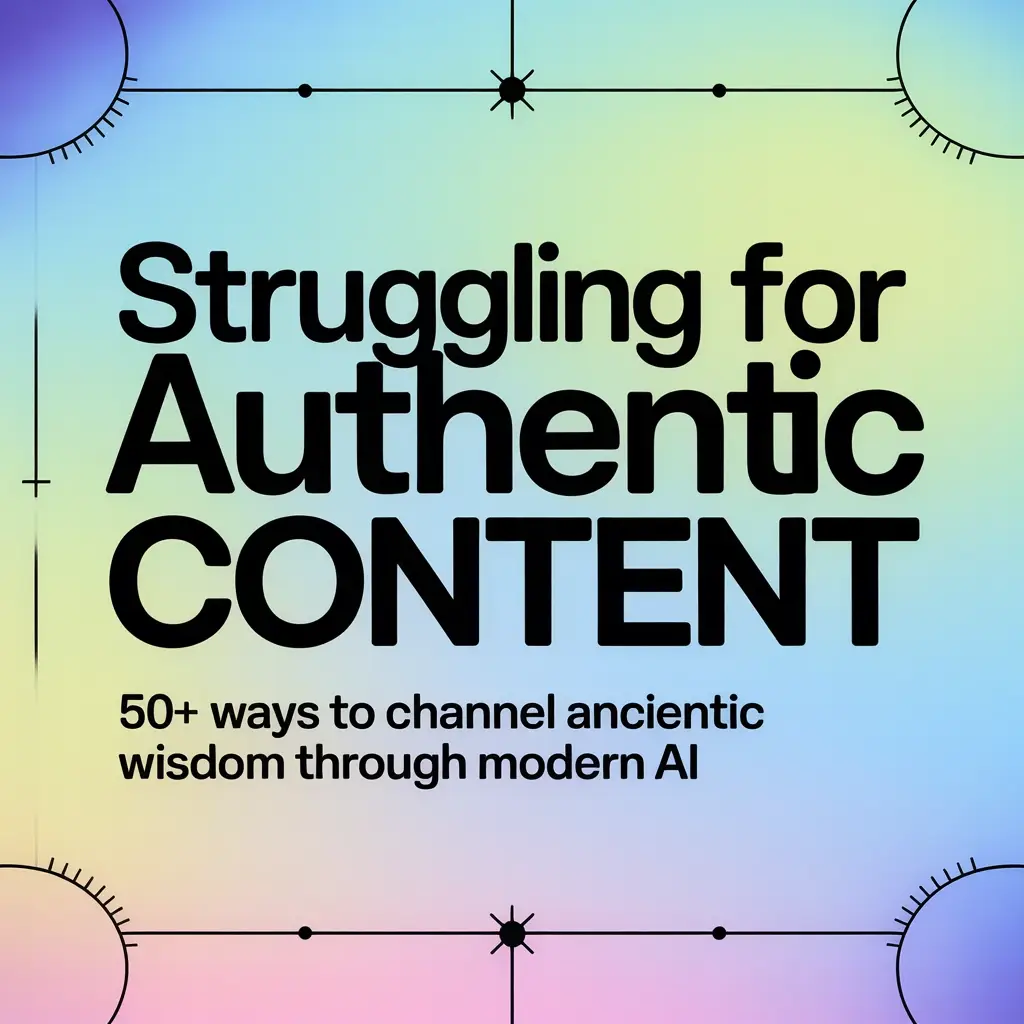Digital transformation affects every aspect of human connection, including spiritual community building. Traditional sacred spaces face the challenge of maintaining their essential qualities while adapting to online environments. The solution involves strategic implementation of digital tools without compromising the depth and authenticity that define meaningful spiritual community.
Understanding Digital Sacred Space
Sacred community differs from general online groups in its emphasis on reverence, vulnerability, and shared spiritual purpose. Digital sacred spaces require intentional design to foster the same depth of connection found in traditional settings. This involves creating virtual environments where members can engage in meaningful spiritual dialogue and experience collective growth.
The foundation rests on consistent, authentic interaction rather than broadcasting content. Sacred digital communities emerge through genuine sharing of spiritual journeys, including struggles and breakthroughs. Members need opportunities to express vulnerability and receive support in ways that mirror traditional fellowship.
Establishing Authenticity Frameworks
Authentic digital community building requires structured approaches to genuine connection. Set regular interaction schedules that allow for personal sharing and spiritual discussion. Create dedicated spaces for members to share challenges, insights, and spiritual experiences without judgment.

Implement consistent engagement patterns that prioritize relationship building over content consumption. Schedule virtual fellowship sessions that replicate the casual conversations typically occurring before and after traditional gatherings. These interactions form the relational foundation necessary for deeper spiritual community.
Develop clear communication guidelines that encourage honesty while maintaining respect for diverse spiritual perspectives. Authenticity emerges when community members feel safe to express doubts, ask questions, and share personal spiritual experiences.
Preserving Sacred Elements Digitally
Traditional sacred practices can be adapted for digital environments through creative implementation strategies. Design virtual sacraments and ceremonies that allow synchronized participation across different locations. Create shared spiritual moments through coordinated prayer, meditation, or contemplative practices performed simultaneously by community members.
Structure virtual worship experiences that maintain the solemnity and reverence of traditional gatherings. Use lighting, music, and visual elements to create atmosphere that honors the sacred nature of community interaction. Plan digital rituals that carry the spiritual significance of traditional ceremonies while embracing technological possibilities.
Establish digital prayer circles and support networks that function similarly to traditional pastoral care systems. Create private spaces for confidential spiritual guidance and community support. These elements preserve the pastoral and caring aspects essential to sacred community life.
Multi-Platform Engagement Strategies
Effective digital sacred communities utilize diverse platforms to accommodate different communication preferences and spiritual needs. Implement discussion forums for ongoing theological dialogue and spiritual reflection. Create interactive workshops and study groups that encourage active participation rather than passive consumption.

Develop content strategies that provide genuine value through spiritual resources, inspirational stories, and practical guidance for spiritual growth. Share meaningful content that facilitates deeper spiritual connection rather than simple entertainment or information transfer.
Establish virtual support networks that connect members facing similar spiritual challenges or life circumstances. Create specialized groups for different life stages, spiritual interests, or community service initiatives. This variety ensures comprehensive spiritual support while maintaining focused community connections.
Balancing Digital and Physical Connection
Digital communities benefit from occasional in-person interaction to strengthen relationships initially formed online. Organize local meetups, regional gatherings, or hybrid events that combine online and offline elements. These face-to-face encounters deepen spiritual bonds and provide opportunities for more intensive fellowship.
Plan seasonal gatherings or spiritual retreats that bring digital community members together physically. Create opportunities for members to collaborate on community service projects or spiritual initiatives in their local areas. These activities translate digital relationships into tangible spiritual action.

Develop mentorship programs that pair experienced community members with newer participants. Structure these relationships to include both digital and in-person interaction when possible. Mentorship creates deeper spiritual connection while providing practical guidance for spiritual growth.
Inclusive Global Community Building
Digital platforms enable connection across geographical and cultural boundaries, creating opportunities for diverse spiritual community. Design inclusive communication that welcomes different cultural backgrounds, spiritual traditions, and life experiences. This global reach enriches community dialogue through varied perspectives and spiritual practices.
Accommodate different time zones and cultural contexts through flexible participation options. Offer multiple meeting times, recorded sessions, and asynchronous discussion opportunities. Create content that respects diverse spiritual traditions while maintaining community focus and identity.
Implement translation services or multilingual options when feasible to expand community accessibility. Consider cultural sensitivity in scheduling, content creation, and community interaction guidelines. Inclusivity becomes both practical necessity and spiritual imperative for global digital sacred communities.
Technology Implementation Guidelines
Select digital tools that enhance rather than replace genuine spiritual connection. Evaluate platforms based on their ability to facilitate meaningful interaction, maintain privacy for sensitive spiritual discussions, and support community building objectives. Choose technology that serves spiritual community rather than directing community toward technological consumption.

Establish clear guidelines for technology use that preserve contemplative qualities essential to sacred community life. Create digital boundaries that prevent technology from overwhelming spiritual reflection and genuine relationship building. Implement regular digital sabbath periods or technology-free spiritual activities.
Train community leaders in effective digital facilitation techniques that maintain spiritual focus during virtual gatherings. Develop technical protocols that ensure reliable, accessible participation for all community members. Address technological barriers that might prevent meaningful participation in digital sacred community.
Sustaining Long-term Digital Sacred Community
Maintain community vitality through regular evaluation and adaptation of digital strategies. Gather feedback from community members about their spiritual needs and technological preferences. Adjust approaches based on community growth patterns and changing spiritual requirements.
Create celebration practices that acknowledge community milestones, member achievements, and collective spiritual growth. Establish recognition systems that honor member contributions to community life. These practices build long-term engagement and spiritual commitment.

Develop leadership succession plans that ensure community continuity as digital sacred communities mature. Train emerging leaders in both spiritual guidance and digital community management skills. Create systems that preserve community memory and spiritual wisdom across leadership transitions.
Measuring Sacred Community Success
Evaluate digital sacred community effectiveness through spiritual growth indicators rather than simple engagement metrics. Monitor member retention, spiritual development reports, and community satisfaction with spiritual support services. Focus on qualitative measures of spiritual connection and community impact.
Track participation in spiritual practices, community service initiatives, and member-to-member support activities. These indicators reveal genuine community health beyond surface-level digital engagement. Regular spiritual reflection and community assessment ensure continued alignment with sacred community objectives.
Document community testimonies and spiritual growth stories that demonstrate digital sacred community effectiveness. Share these examples to inspire continued participation and attract new members seeking authentic spiritual community. Success measurement should reflect the transformative power of genuine spiritual fellowship rather than simple digital metrics.
Digital sacred communities succeed when they create spaces for genuine spiritual growth, authentic relationship building, and meaningful service to both community members and broader spiritual purposes. The integration of technology serves these spiritual objectives rather than replacing them with digital substitutes.



